There is absolutely nothing wrong with buying your ground beef already packaged at the grocery store. You can get a great, juicy burger when the meat is handled correctly. We receive comments and questions about how to grind your own burger so we are going to give you some ins and outs on fresh ground beef vs store-bought and is there really a difference. You can actually use one cut of meat or mix different cuts together. We are going to talk about the options right here.
Some of the links on this site are affiliate links, which are at no additional cost to you, I receive commissions for purchases made through those links in this post. Please read my Disclosure for additional info.
What is the Difference in Freshly Ground Meat and Packaged Meat?
There are differences in the quality of freshly ground hamburger meat and packaged meat – it’s not that store-bought meat isn’t good. However, there is nothing better than taking a good strip or ribeye, or any other cut of beef, and grinding your own burgers in your own grinder to get a flavor that’s unmatched in terms of quality.
By grinding your own meat, you know what the cut of beef or poultry is that you are dealing with because you picked it out. Whether you use a chuck roast to get the 80/20 ground beef, or you mix it with other cuts, you know the exact type of blend you are getting. The same with using chicken breasts or thighs.
Packaged ground beef is made from different cuts, just as with fresh, but you don’t know what is being used. To obtain different lean-to-fat ratios, the meat is ground multiple times through the grinder and as this is done, the fat is rendered out leaving you with a leaner cut of ground meat. This may sound good, but if you are purchasing a high lean-to-fat ratio beef it may have been created from a fatty cut of meat and multiple processing created the leaner cut. See this article from thekitchn.com for additional information on what is in your ground beef.
Why Does Packaged Ground Beef Have to be Well Done?
Packaged ground beef as opposed to grinding your own burger, must be cooked to 160 degrees to ensure all bacteria are killed off. The bacteria contained in ground beef is due to the processing that factories go through to grind the meat. They also add trim (extra fat) to the meat to get the ratio of lean-to-fat that is required for what they are packaging.
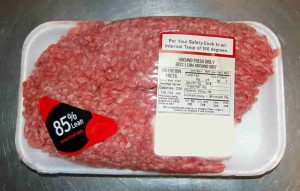
Meat plants do have safety processes in place when it comes to preparing the ground beef, but through these processes, the meat is handled multiple ways and some bacteria are likely to get into the meat from surfaces it touches. Because of this, you want to be sure to cook your burgers to 160 degrees to ensure that all bacteria is killed off and you have a safely cooked, great burger.
When you know how to grind your own burger you don’t have to be concerned about the bacteria. The safety concern that goes along with packaged meat is that bacteria such as e-coli sits on the outside of the cut of beef. Companies do use an intervention product to kill the bacteria on the meat and they do the same thing when grinding beef – here is the difference.
Every time meat is ground at a big facility there are different opportunities to contaminate the product because the meat comes out of a grinder, goes into a lug, then goes into a patty making machine that has ran multiple products. Obviously industries go way beyond to ensure that food is safe, but there are always those opportunities where you have a greater risk of contamination than you would if you grind your own product.
For these reasons, you want to be sure to cook your burger all the way through to make sure you are eating safely.
How to Grind Your Own Burger?
Freshly ground beef gives you a higher quality for your burgers, whether you are using beef or poultry. Think of how fresh the meat is that you are grinding and the lack of bacteria that is present in packaged ground meat.
Make sure that your meat is cold prior to putting it through the grinder. It shouldn’t be frozen, but be sure it has been in the refrigerator or freezer for about 30 minutes. This helps to keep the meat firm and from gumming up on the grinder head. Fat can smear on the grinder screw so chilling is important.
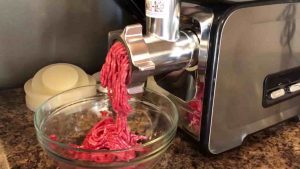
If you are using a grinder, cut the meat into strips so they go straight into the grinder. If you are using a food processor, cut the meat into cubes before putting it into the processor.
When you are grinding burger meat in the food processor don’t mix it a lot because you don’t want to end up with a sloppy pile of meat. When using a grinder you may have heard some say to run the meat through the grinder at different plate sizes twice. Don’t grind the meat twice – use the desired plate size that you want to get the size meat columns you are looking for. Grinding it more than once strips the fat from the meat resulting in a leaner cut, which isn’t bad but the whole point is to keep the amount of fat in the meat to create that great, juicy burger. If you wanted a leaner burger, you would begin with a leaner cut of meat.
To determine the size of the plate to use – if you want larger columns of meat or smaller – decide what kind of burger you are going for. If you want a burger that will hold together really well you will use smaller columns so they basically stick together more so you get a firm patty (use a small or medium plate).
If you use the larger plate with bigger columns you would have a looser patty. This is what you would want if you are making a Crush Burger™ because it is easier to smash down as you have lesser columns of meat. It all depends on the quality and texture of the meat you are looking for.
So as to the different plates – smaller holes in the plate will not give you a good fat distribution. Bigger holes in the plate will give you chunks of fat and not be distributed.
Comparison of Fresh Ground Beef vs Store Bought
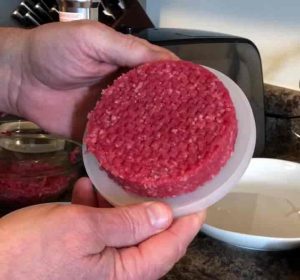
The texture cannot only be seen in the fresh ground beef vs store-bought – just see these photos – but the taste is incomparable. The columns created from the grinding and looseness of the meat creates air pockets that help keep the meat loose and flavorful creating a good bite – not dense and hockey puck-like! This creates the uniqueness of using a grinder as the meat from a store gets into a package and is basically mashed up taking all the columns of meat and making it into one.
The juices from the meat have also collected around the columns. This is actually tenderizing the meat because you aren’t taking a bunch of hamburger smashed together as you would have in packaged meat.
When shaping your burgers, don’t overwork the patties as you wouldn’t overwork patties made with packaged beef. You don’t have to smash your burgers into a dense hockey-puck like patty. You want that looseness and the air pockets to keep the meat moist and flavorful.
Best Cuts for Grinding Hamburger Meat
Beef Burgers
There are many ways and cuts of beef you can use for grinding hamburger meat. Here are just a few examples.
Mix Ideas:
- 1:1 ratio – sirloin or round and pork shoulder
- 30% ribeye, 30% chuck and 40% sirloin: 40% chuck, 30% short rib and 30% brisket gives a 20-25% fat content
- Short ribs and sirloin
- Brisket and tenderloin
- One of the most popular mixes is chuck, brisket, and short ribs
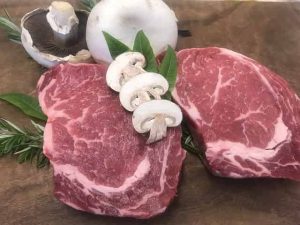
Check out this information from seriouseats.com on different cuts of beef you can use.
When grinding your own meat to make beef burgers, you are best to start with a chuck roast. This will give you the lean-to-fat ratio of the 80/20 grind. This is the most recommended ratio to use to ensure the juicy burger you are looking for.
To get a different flavor and a higher lean-to-fat ratio, you might consider adding brisket to your chuck roast. Brisket has a higher fat ratio in the meat so it adds that extra juiciness and flavor to the meat. The two cut types of brisket are the Point Cut that has more flavor due to the additional amount of fat. The Flat Cut has less fat running throughout the meat, but can be more expensive due to the leanness of the cut.
Another highly chosen cut of beef to add to your burger mix is short rib. This cut is part of the beef chuck portion of the animal. So you are going to get a similar cut of meat as you would the chuck roast as these come from the chuck portion of the cow. They also have a very beefy flavor so making them part of your beef mix will give you quite the meaty burger taste.
Grinding Chicken Meat for Burgers
The same as with packaged beef, you have to be careful of bacteria on packaged chicken. But keep in mind, even if you grind your own chicken you must cook the burgers to 165 degrees. Raw or pink chicken is a big no-no!
When you are grinding your own chicken pieces for your burgers, you know what pieces you are using and they are marked for quality and purity. Packaged ground chicken can contain different parts and from different chickens. With the chance of cross-contamination, you don’t want to take that chance.
You may have a butcher that grinds their chicken in-house, which is the best scenario. But packaged ground chicken is done at a factory with the same bacteria issues as that of ground beef. With grinding your own, you can choose the cuts of chicken you want to use and you can even choose those pieces that are certified organic.
You also know you are getting the actual meat. Packaged ground chicken can contain the skin of the chicken and even the bones. Chicken bones are very thin so you wouldn’t even notice them in your meat.
As far as the type of chicken meat to use for grinding, it is basically the same method as beef. If you use white meat, you will get a very lean burger. If you add dark thigh meat to your blend, you will get a bit of fat added as the dark meat is a fattier piece than the breast meat.
Before grinding your chicken, be sure to trim off any of the excess fat hanging on to the piece and cut out any veins so you have a nice, clean cut of meat.
How to Grind Your Own Burger – Grinder Not Needed
You may be thinking – I don’t have a meat grinder or an attachment to my stand mixer. This is not a problem, so don’t let it stop you! There are various methods of grinding meat for burgers and you will achieve different textures with each method.
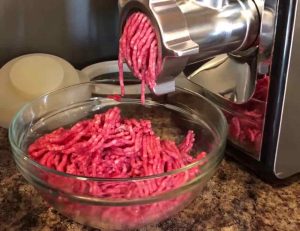
- Electric Meat Grinder: of course the main method is using an electric meat grinder. There are several choices in a wide range of prices and accessories included.
- Hand Grinder: if you don’t want the cost of an electric grinder, you can use a hand-crank grinder. You can get one of these for about $20-$25.
- Stand Mixer Attachment: if you have a stand mixer such as the Kitchen-Aide, they have a grinder attachment that works very well. So you can just add to what you already have.
- Food Processor: many didn’t know that you can grind meat using a food processor. You may not get the columns of meat that you get with a regular meat grinder, but they work very well to get a nice chop in the meat and also have those air pockets.
- If you don’t have any of the above, you can absolutely use a sharp chef’s knife to finely cut up the meat.
Conclusion
Grinding your own burger meat is something you should try to see the difference for yourself in the fresh ground beef vs store-bought. It is great to experience the difference in the texture and the taste of the meat. As we said before, you can’t go wrong at all with packaged ground meat. As with anything read the label to be sure you know exactly what you are getting. And if you still aren’t sure, ask your butcher.
Let us know if you have ground your own meat and what you think about it. We love to hear your thoughts and share them with our community! You can also check out our video below on the grinding process.

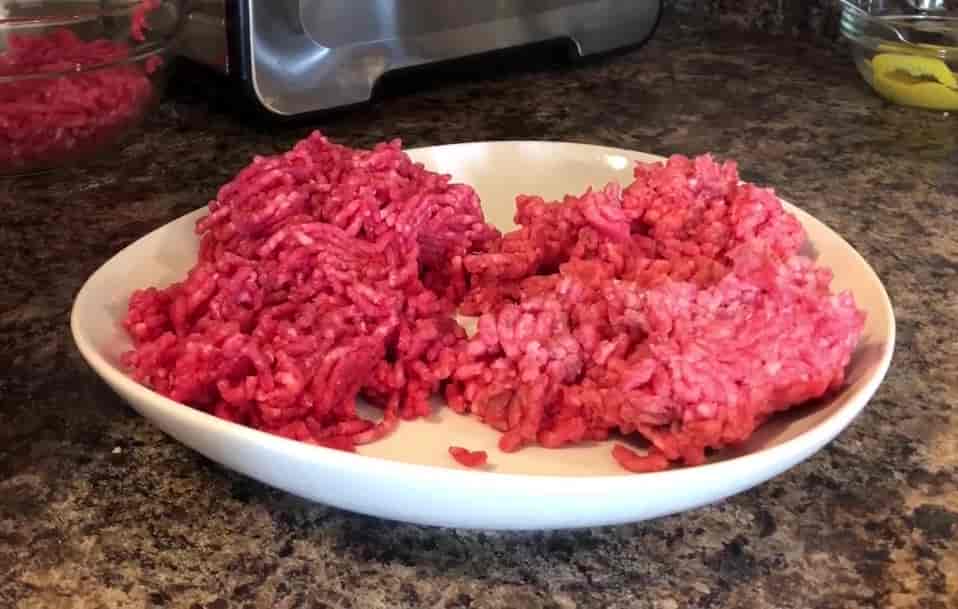
Diane, there is absolutely nothing wrong with store bought. You can make great burgers from packaged meat.
I do not have a grinder to grind up my own meat and store bought ground beef is currently my only option